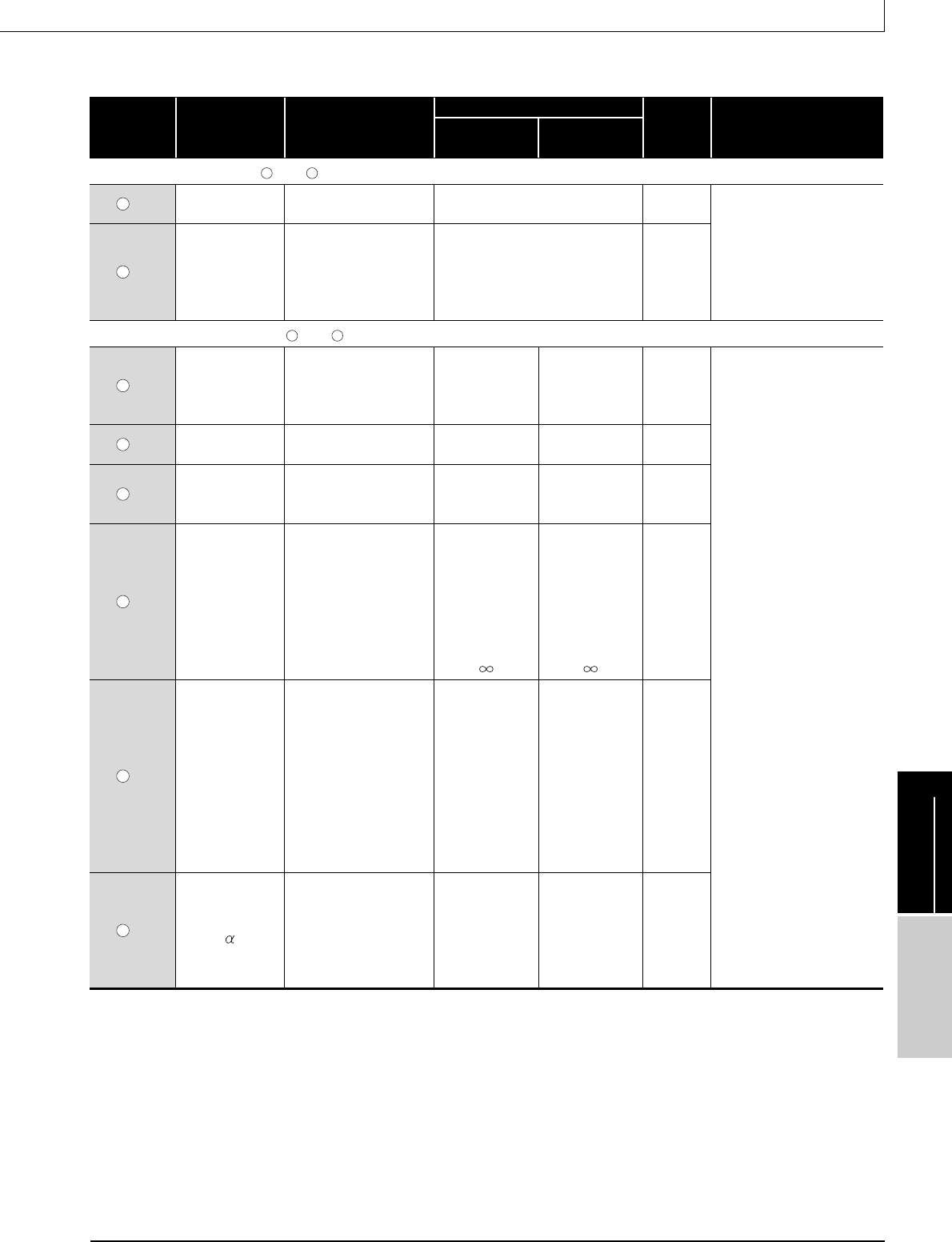
6.2 PID Control Instruction (Exact Differential)
6.2.1 PIDINIT instruction
6-17
PIDINIT
6
PID CONTROL
INSTRUCTION
PIDINIT
(1) PID control data
*1 : For the PID operational expressions set for Operational expression selection, refer to MELSEC-Q/L/QnA
Programming Manual (PID Control Instructions).
Device Data item Description
Setting range
Setting
side
Processing when the
setting data are outside the
setting range
With PID limits
Without PID
limits
Common setting data (device: +0 to +1)
+0
Number of loops
Set the number of loops
for PID operation.
1 to 32 User
An error occurs and the PID
operation for all loops is not
performed.
+1
Number of loops
in one scan
Set the number of loops
for PID operation in one
scan if multiple loops
have reached the
sampling cycle time.
1 to 32 User
Setting data for No. 1 loop (device: +2 to +11)
+2
Operational
expression
selection
Select the PID
operational expression.
*1
0: Forward
operation
1: Reverse
operation
0: Forward
operation
1: Reverse
operation
User
An error occurs and the PID
operation for the
corresponding loop is not
performed.
+3
Sampling cycle
(T
S)
Set the PID operation
cycle.
1 to 6000
(unit: 10ms)
1 to 6000
(unit: 10ms)
User
+4
Proportional
constant
(K
P)
Proportional gain of PID
operation
1 to 10000
(unit: 0.01)
1 to 10000
(unit: 0.01)
User
+5
Integral
constant
(T
I)
Constant that expresses
the magnitude of the
integral action (I action)
effect.
Increasing the integral
constant slows down the
manipulated value
change.
1 to 32767
(unit: 100ms)
If setting value
> 30000
T
I = Infinite
( )
1 to 32767
(unit: 100ms)
If setting value
> 30000
T
I = Infinite
( )
User
+6
Derivative
constant
(T
D)
Constant that expresses
the magnitude of the
derivative action (D
action) effect.
Increasing the derivative
constant causes a
significant changes in the
manipulated value even
with a slight change of
the control target.
0 to 30000
(unit: 10ms)
0 to 30000
(unit: 10ms)
User
+7
Filter coefficient
( )
Set the degree of filtering
to be applied to the
process value.
The filtering effect
decreases as the value
gets closer to 0.
0 to 100 0 to 100 User
s
s
s
s
s
s
s
s
s
s
s
s


















